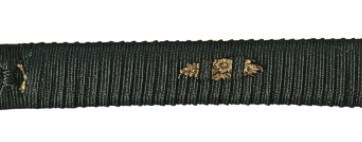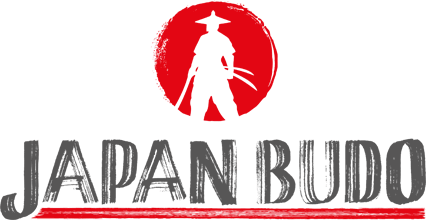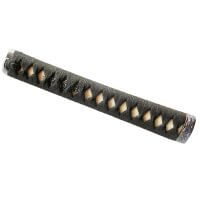Katana handle
You can customise your katana handle here.
The handle (tsuka) is manufactured for you in Japan according to local quality standards. The handles are produced without holes (Mekugi-Ana).
Showing the single result
Showing the single result
Katana handle - What makes Japanese sword handles so special
Japanese sword hilts are a special development and were already praised in historical sources by contemporary authors.
The special way in which the handles are made allows the katana handles to be changed quickly if they are damaged, while at the same time providing a very stable grip and a secure connection between handle and blade.
The tang of samurai swords is thin and wide. The handle is slid over the tang and secured with a bamboo pin (mekugi).
Like the sword sheath (saya), the handles (tsuka) for katana are traditionally made of Magnolia wood (Honoki).
To make it, a flat piece of wood is sawn into 2 equal halves and then the recess for the blade tang is cut out on both sides until it fits perfectly.
The 2 halves are then glued together and a very rough katana handle is created. This is customised in the next step, both the inside, where the blade tang is placed, and the outside, which is later to be gripped by the sword owner.
Shapes of Katana handles
Theoretically, the handle can be shaped very differently, but in practice 3 shapes have become established
Hyojun - waisted on one side
Hyojun is the most common handle shape. This katana handle is straight at the top and slightly waisted at the bottom.
This gives the katana, with its slightly curved blade, the appearance that the curve of the blade is continued in the handle.
However, the handle is actually straight with a one-sided waist.
Imo - straight
Imo is a straight handle shape without a waist. This shape is particularly comfortable for people with large hands.
The handle looks much more solid than the waisted shapes. This suits some swords better than a graceful-looking handle.
Ryugo - Fitted on both sides
Ryugo is a shape in which the sword handle is waisted on both sides. This means that the handle sits very comfortably in the hand, but is relatively narrow compared to the other shapes.
Same
After the handle has been given its basic shape, the ray skin inlay is added.
This is in the form of a strip on both sides of the sword handle, which provides support for the grip tape and is the standard for today's training swords.
However, there is also the form in which the ray skin is completely wrapped around the sword hilt. This gives the sword hilt additional stability, which is why this solution was the standard for the old swords when they were still used for fighting.
Tsuka Ito
The next element that is attached to the katana handle is the grip tape. This is called Tsuka Ito or simply Ito. Ito means strap. Tsuka means, as previously mentioned, grip.
In Japan, 2 materials are available for winding the handle. If you would like to try your hand at winding a sword hilt yourself, you will find the appropriate material in our category Tsuka Ito.
Cotton grip tape
Cotton is the most widely used material for wrapping the hilts of Japanese swords.
A small amount of elastic material is added to the cotton, as this makes the handle easier to wrap.
Silk grip tape
Silk is the much more noble material for handle wrapping. It is more durable than cotton and the colours have a much higher radiance than cotton windings.
Tsuka Maki
Maki means something like wrapped. Tsuka Maki is the wrapping of the handle. Did you know that there are over 40 different ways to wrap a katana handle?
Visually, it is easy for the layman to distinguish between two basic types of grip wrapping. The most common wrapping is the standard wrapping with diamonds and X-shaped grip tape. Shown here using the example of Hineri Maki:

A contrast to this are the handle wraps, which are known today as "war wraps". These are relatively simply bound. Rumour has it that these wraps were therefore more likely to have been used in times of war in Japan. However, there is no historical evidence for this.
We show Gangi Maki as an example:

Menuki
Meunki are decorative elements made of metal under the handle winding. They are made by specialised craftsmen and are works of art in the smallest of spaces.
Functionally, they support the grip of the Katana handle.
As you can see from our example grip wraps, the menuki can be completely under the grip tape or tied on top. This mainly depends on the chosen wrapping style.
Fuchi/Kashira
The katana handle is completed by fuchi and kashira, the end caps of the handle, which hold the handle together even under heavy loads.
The appearance of the two elements is usually coordinated. The set is also called fuchikashira or fuchigashira.
They are also made by specialised craftsmen and can have extreme artistic value.
The grip tape is pulled through Kashira and gives the entire grip winding additional stability. The fuchi element closes the handle on the other side.
Shito Dome
Shito domes are an optional decorative element. They are also known from kurigata on the scabbard. Shito domes are decorations around the opening on kurigata or, in the case of a hilt, around the holes in the kashira through which the hilt strap is pulled.
Shito domes are usually black, silver or gold in colour.

